What is the density of the fabric? What is the best bedding fabric? Stripe satin bed linen
Satin is a dense, durable, beautiful fabric that does not lose its properties after repeated washing, is pleasant to use, and durable. Bedding, curtains, bedspreads, and clothes are made from it. Satin is produced on a loom. Strictly speaking, the word “satin” refers to the process of making fabric using a certain weave of threads. The term stuck and began to refer to the fabric obtained in this way. What kind of fabric is satin, what properties and advantages does it have, we will consider below.
General weaving technology
Hand weaving devices first appeared in very ancient times, during the Paleolithic period. The process was mechanized in the 17th century. In modern weaving, many types of weaves of various raw materials are used. The type of weaving determines the quality of the fabric: appearance, strength, other consumer properties.
Textile fabrics are made from perpendicularly directed threads. Some of them are oriented longitudinally in the fabric, parallel to the edge of the fabric. They are called the base. Others run perpendicular to the edge of the fabric, called weft. When weaving, a pattern is formed, a repeated fragment of which is usually called rapport. In general, the canvas contains many identical rapports. In different fabrics, the number and ratio of threads in the warp and weft of the rapport differs.
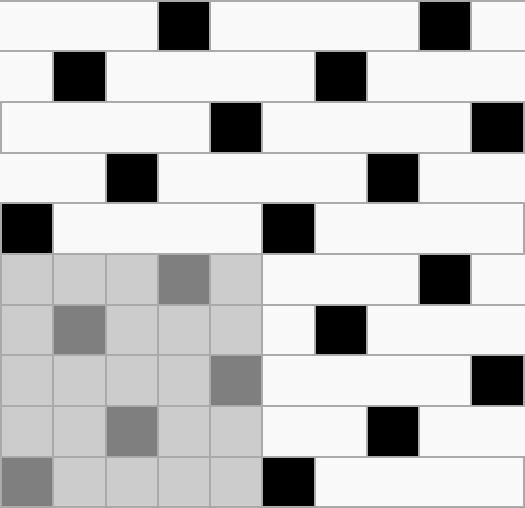
During the weaving process, the longitudinal and transverse threads intersect. The place on the right side of the fabric where the warp thread is on top is called the warp overlap. In the weft overlap, the weft thread is visible on the front part. There is a distance between similar places of single overlaps, which is called a shift.
Features of satin production
- A distinctive characteristic of satin is the use of twisted thread-like fibers.
- The warp threads are usually thicker and stronger, the weft threads are thinner. Twisting makes them shiny.
- With simple weaving, which includes satin, within the rapport, the number of warp and weft threads is always equal.
- In satin fabric, the shift is always greater than 1, the minimum is 2.
- The front side of satin fabrics is dominated by weft threads, and the back side by warp threads.
- The repeat of satin fabrics has a minimum of 5 threads. Accordingly, the weft thread covers at least 4 warp threads. If there are only 7 threads in the repeat, there are 6 under the weft thread.
- To improve the quality of dyeing and increase the strength of the fabric, thread-like raw materials used for the production of some types of satin are pre-treated with alkali solutions. The process is called mercerization. This treatment partially changes the form of cellulose underlying the raw material. Products acquire additional shine.
WITH reverse side Satin fabric is dominated by warp threads. The type of weaving with a predominance of the warp thread in satin type repeats is called satin. Therefore, satin weave is the reverse side of satin.
Classification of satin by density
An important indicator of fabric quality is the number of intertwined threads per 1 cm 2 of fabric area.
- For production, ordinary satin with a thread count of 85 to 130 is used. To improve the quality, such satin is mercerized or calendered. Calenders are heated rollers through which fabric is rolled.
- Printed satin intertwines multi-colored threads, which can be from 85 to 170. Bed linen is also sewn from this fabric. The pattern of printed satin has no clearly defined boundaries.
- On bed linen made of printed satin, the design is inscribed strictly according to the size and shape of the product. The thread density in this fabric ranges from 85 to 170.
- Satin, made using the jacquard technique, has a double-sided pattern created by a specific weave. The number of threads in satin jacquard varies from 170 to 220.
- Airy mako satin has no less than 220 very thin, high-quality threads. The fabric is light, durable, dense.
Classification by nature of threads
The satin weave method can be used to weave fabrics from raw materials of various natures.
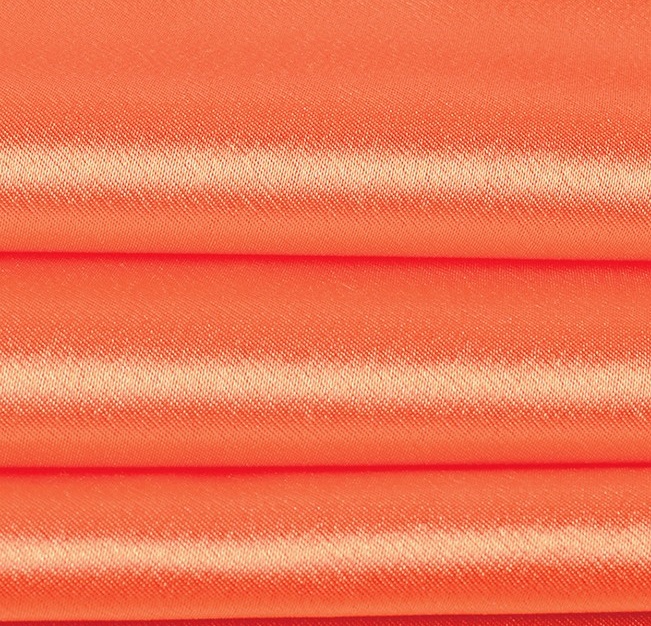
Classification by dyeing method
Depending on the dye application technique used, fabrics are obtained that differ significantly in price and appearance.
- Fabric of one color can be bleached or dyed uniformly. It is used to make workwear and budget bed linen.
- Products made from printed satin are more expensive. The fabric is dyed with printing. Options for applying coloring pigments vary.
- Reactive printing applies beautiful three-dimensional drawing, which is now commonly referred to as 3D. For this dyeing technique, high-density fabric is used.
- Stripe satin has one color tone. The relief on the fabric is due to the partial use of jacquard weaving technique. The prefix “stripe” denotes the presence of stripes in the pattern. Alternating relief patterns adorn textiles.
Currently, products made from satin fabrics are popular. Consumers are happy to choose the option they like, having repeatedly seen in practice the advantages of the fabric.
General qualities of satins
Let us describe the main advantages of satin (this is true for cotton sateens):
- The fabric is hygienic and absorbs moisture well. The human body “breathes” under such fabric.
- Low thermal conductivity allows you to avoid overheating in satin clothes in summer. In winter, satin fabric maintains a pleasant physiological body temperature.
- The material is light, soft, airy, creating a feeling of comfort.
- The durability of the fabric allows it to be washed many times. Only after the fourth hundred washes can the gloss begin to disappear.
- The material does not wrinkle and forms natural draped folds.
- Satin fabric made of natural fibers environmentally friendly, does not cause allergic reactions.
It’s difficult to say anything about the disadvantages of satin, because... There are no obvious disadvantages. Some consumers do not like the sliding properties of the material. It may not be very comfortable to sleep in silk pajamas on a satin sheet. In this case, you should change your pajamas or choose different bedding.
Having information about all types, types, and features of materials, you can choose the most suitable option. Satin fabrics have surrounded humans for many centuries. This inspires trust.
Video about how cotton fabric is produced at modern enterprises:
What material is better for bedding?
What fabric is better to buy bed linen from - what fabric to choose, which is the best and what kind of bed linen is made from - read our article.
What is the best bedding fabric?
A wide range of offers of bed linen from manufacturers creates certain difficulties in choosing which fabric is best to buy bed linen from. The answer to this question cannot be unambiguous, since it depends on a number of factors, for example, on the price category of the kit, its purpose and, to some extent, on the preferences of the buyer. Manufacturers' offers are very different; they differ not only in the composition of the fabric, the conditions of its production and the raw materials used.
An important factor in the choice is the color, as well as the style of the selected set, which should be combined with the interior design. Today, online stores offer a huge selection of bedding sets from manufacturers - the materials and sizes are very different, as are the prices, so before purchasing you need to know what their differences are. The characteristics of the product will help you with this, which should be carefully studied before purchasing.
General recommendations on what fabric to buy bed linen from are based on the characteristics of the material used to sew the set. This is what you should start from when purchasing, taking into account the appearance and design. Until recently, the most common fabrics used for sleeping textiles included satin, linen and calico. These fabrics appeared back in the 18th-19th centuries and were distinguished by their reliability and long-term use. Their key advantage is natural composition and low price.
Underwear made from the listed materials can be found on sale mainly from domestic manufacturers, who still operate on outdated equipment and offer inexpensive products familiar to consumers. If you choose from the above which material is better for bed linen, you can recommend linen, provided that you are not irritated by the rather rough structure of the fabric. If you want to purchase a set with a silky finish, choose domestic satin.
Particular attention should be paid to the density of fabric for bed linen - which is better? High-quality materials include samples with a density of 130-280 threads per square meter. cm, but in stores you can often find sets with low and medium density. This parameter primarily differs for fabrics different types, in the production of which different weaving is used, which determines the density of the fabric.

Bed sheets made from cotton (calico) and linen has a medium or low weaving density, but benefits from the strength of the thread itself. Turkish cotton has a density above average, the best density is percale type fabric. Silk is considered the most suitable for bed linen; this fabric is guaranteed to last for several decades due to its tight weave. Key Difference popular among consumers of Egyptian cotton is that this material has a high density without losing softness.
In total, best fabric for bed linen it is considered percale type, made of Egyptian cotton and silk. There are a number of other proposals based on modern materials that are supplied by large manufacturers to factories.
Characteristics of the materials from which bed linen is made
In general consumer terms, the best fabric for bed linen is Egyptian cotton, as it is durable, very soft and delicate, creates excellent conditions for sleep, is breathable and has adsorbent and antibacterial properties. But your choice may concern other types of fabrics.
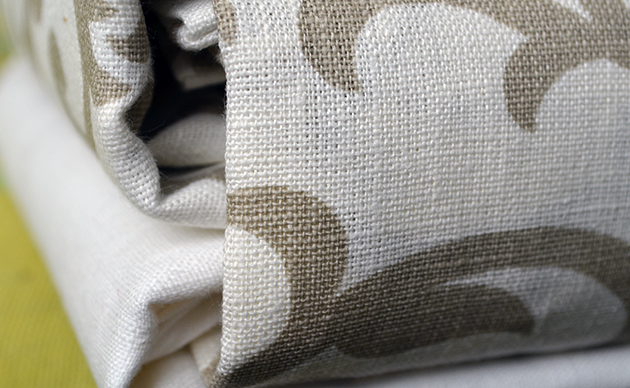
Percale
Percale material is made from long-staple cotton, its density is about 115 threads per square meter. cm. Developed in the 17th century in India and later produced in France. For the production of percale, cotton raw materials are used, so it is usually not necessary to specify the composition as in the case of satin.
Percale belongs to the luxury linen fabrics due to its wear resistance, appearance, and optimal softness. Most European brands offer underwear made from this fabric. This material retains heat perfectly and is suitable for winter sets of linen; it has a pleasant smoothness and softness. Withstands 1000 washes.
Euro satin with different types of fibers
In most stores you can find the name “euro satin” as the fabric used; this is the most common material offered by manufacturers. It's about about the type of weave of the material and, accordingly, the density and strength of the fabric. Domestic satin has a density of 85-130 threads per square meter. cm, euro satin - 120-140 threads per sq. cm. That is, satin produced according to European standards has a higher quality and higher density.
Euro satin can be made from cotton fibers, bamboo or silk. The features of these materials include:
Bamboo: will withstand at least 500 washes, has excellent bactericidal and hypoallergenic properties, provides thermoregulation and eliminates unpleasant odors and excess moisture, in summer time saves. Has a low price;
Cotton: has excellent absorbency, is completely hypoallergenic, quite soft and rustling to the touch; it is better to purchase underwear made from Turkish cotton, which has higher strength and softness. Has a low and average price;
Silk: Euro silk-satin is the leader in the budget segment among bedding fabrics, allowing the production of high-quality and inexpensive sets. In addition to the above properties, silk materials have better strength and create a more comfortable feeling while sleeping. It has a higher, but affordable price in the mid-price segment.
Euro silk satin is available with jacquard weaving; such palace-style linen can be found on sale at a favorable price. Its appearance and consumer qualities are beyond praise and together determine what material is best to buy bed linen from. Such kits are chosen for special occasions or exclusive interiors.

Satin
On sale you can find the names of fabrics “one-and-a-half satin” and “family satin”. We are talking about standard quality satin with a canvas width designed for different types sets - single and double. Manufacturers often combine two types of materials - regular and improved satin - to reduce the price of the model. Less durable satin is used for the back of pillowcases and the front of duvet covers. This technique was seen in two-color sets. So, the answer to the question of which bedding fabric is better lies in your capabilities and needs. You can find it on sale great options for any budget.
Euro tapestry
Euro tapestry usually has bright colors and is distinguished by highly durable weaving. The euro tapestry fabric density is 125 threads per square meter. cm. Bed linen can be used in cases where high strength is important, and buyers prefer fabrics that hold their shape.
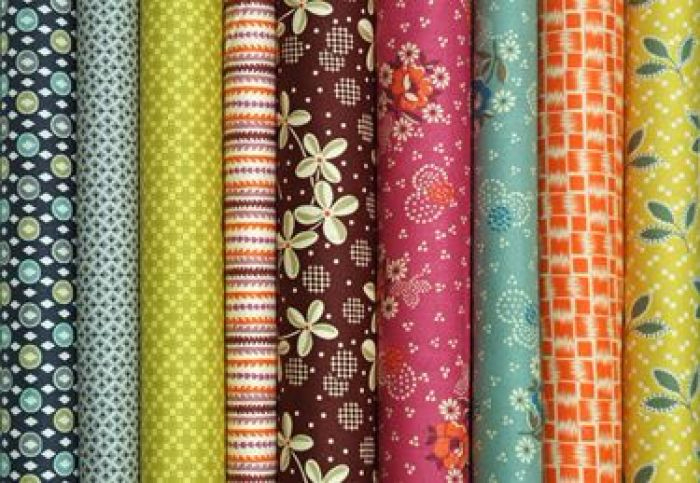
Egyptian cotton
Most people who have traveled to Egypt, when asked “what material is best to buy bed linen from,” will choose Egyptian cotton. Egyptian cotton bedding sets are distinguished by their unique softness and silkiness, while being highly durable. In winter, such underwear retains heat perfectly. The material is made from long-staple cotton of a special grade, but you need to keep in mind that real Egyptian cotton is not always available for sale.
The length of the fiber can depend on a number of parameters. Typically, to reduce the cost, the material is made from several varieties of cotton, which ensures an affordable price. Such material may be listed as Euro satin based on Egyptian cotton. Please note that some European brands produce sets made from luxury fabrics of higher quality, which is always reflected in the cost.
Microfiber
Microfiber is an acrylic-based material that is completely synthetic, but its qualities largely determine the choice of consumers. Microfiber bedding has a soft velvety structure, perfectly absorbs moisture, provides thermoregulation and does not hold its shape at all, but does not wrinkle. This is the best fabric for bed linen - reviews of this kind can be found about microfiber linen on a number of forums.

Choosing bed linen for different purposes: questions and answers
In conclusion, we can summarize which bedding fabric is the best. Here it is better to give recommendations on choosing kits for certain cases in the form of tips, questions and answers:
- “How to choose for special occasions?”: linen made from large-patterned jacquard fabric based on euro silk-satin is ideal for special occasions and as a wedding gift for newlyweds; made from Egyptian cotton is very practical for romantic nights;
- “What fabric is used for hotels?”: usually percale, euro satin or satin are chosen for these purposes, depending on the category of the hotel;
- “What fabric is the best bed linen for summer?”: choose bamboo satin-euro;
- “How to choose fabric for newborns?”: Egyptian cotton or bamboo-based euro sateen is better for a child, as it eliminates odors;
- “Which fabric to choose for a teenager?”: in this case, it is better to recommend microfiber or euro satin.
- “The best bed fabric for winter?”: percale and microfiber are ideal for the winter season.
We hope that our advice on what the best bedding is made of will be useful. In total, when purchasing linen, it is worth considering what materials are used to make it.
A restful, healthy sleep is possible only if a person can completely relax, feel comfortable and comfortable in bed. High-quality satin bed linen will help with this. Learn to understand the variety of types of fabrics and their characteristics.
What is satin
Having understood the intricacies that determine the quality of the fabric before purchasing, it is easier to make a choice. Satin is a cotton fabric that has a smooth, shiny surface reminiscent of satin. The strength and density of the material depends on the number of threads woven per square centimeter. The number can range from 85 to 220. Manufacturers use threads of different thicknesses and weaves. For satin, a small percentage of synthetics is acceptable to increase wear resistance.
Satin bed linen
Small and large textile manufacturers are happy to use satin for bed linen, which has proven itself to be an excellent durable material. Popular brands maintain their image through reasonable price-quality ratio. Here is the rating the best manufacturers bed linen, including satin:
- "Artbed". Art Design company, Russia, Ivanovo.
- "Tas." Turkish holding.
- "Blakit." Baranovichi, Republic of Belarus.
- Textile association "Monolit" with the brand of the same name. Russia.
- "Asabella." China.
- "Walteri." China.
- "Vilyuta." Dnepr. Ukraine.
- "Cleo." China.
- "Saylid." Russia.
Mako satin bed linen
One of the newest textile developments is mako-satin fabric. Eco-friendly production based on the highest quality Egyptian long-staple cotton. Combing out small fibers in a special way makes mako-satin bed linen thin, smooth and at the same time very durable and resistant to all kinds of damage. Options:
- TM "TAS":
- Model: Brenna.
- Cost of a double set: from 5350 to 6200 rubles.
- The set includes two pillowcases, one sheet, one duvet cover. Packaged in a gift box.
- Main advantages: due to its smoothness, the fabric gives a feeling of coolness on hot days, does not require careful ironing, can withstand up to 200 washes, maintaining the color and shape of the product.
- Cons: high cost.
- Manufacturer Amore Mio:
- Model: Eva.
- Cost of a double set: 1300-1600 rub.
- The set consists of square pillowcases, a duvet cover, and a sheet.
- Main advantages: beautiful shine, durable coloring at an inexpensive price, does not wrinkle, gives a feeling of coolness in summer.
- Cons: sometimes the size does not correspond to the specified size by 1-2 cm.
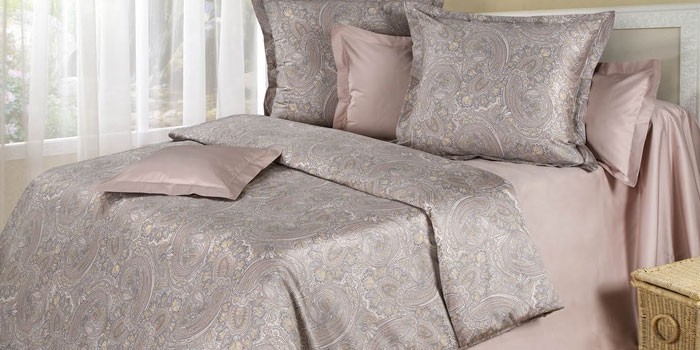
Satin jacquard bed linen
Premium-class fabric has a weave density of 170-220 threads per square cm. Bed linen made of satin jacquard looks rich, beautiful, ideal for a gift. The special interweaving of the threads makes it possible to create a convex relief pattern on a smooth flowing fabric. Plain or with a printed pattern in several shades, types of material will equally attract the attention of true connoisseurs of high-quality bed linen. Options:
- TM "Cleo":
- Model: 021.
- Cost of a family set: 9250-9470 rub.
- The set includes 4 pillowcases (2 pieces each different sizes), 2 duvet covers, 1 sheet. Gift packaging in a box and bag with handles.
- Main advantages: high strength, delicate pattern, good heat-saving quality, wrinkle-resistant fabric.
- Cons: high cost, sliding surface, excess heat in summer, addition of synthetic threads.
- TM Vilyuta:
- Model: Tiare 1611.
- Cost of the euro kit: 4300-5650 rubles.
- The set consists of 4 pillowcases (2 pieces of different sizes), sheets, duvet cover. Packed in a cardboard box.
- Main advantages: durable anti-allergic fiber (100% cotton), pleasant to the touch, does not require ironing, can withstand a large number of washes, iridescent relief pattern.
- Disadvantages: over time, tightening may occur at the embroidery site.

Stripe satin bed linen
At first glance, the resemblance to jacquard satin is based on the texture of the fabric. Bed linen made from stripe satin is distinguished by characteristic convex stripes and muted tones. Permanent coloring using a special method ensures long-term preservation of the original color. In the bedroom, decorative textiles look very advantageous, so they are ideal for a practical gift.
- Manufacturer ArtPostel:
- Model: Stripe satin Cappuccino.
- The cost of a set of size 1.5: from 3415 to 3640 rubles.
- The set consists of two pillowcases with ears, a duvet cover, and a sheet.
- Main advantages: delicate pastel color will suit any bedroom interior, narrow 1 cm stripes look unobtrusive, durable fabric with a silky soft texture.
- Cons: The thread count per 1 sq. cm is 130, which is less than the average standard of 140.
- Manufacturer Text Design:
- Model: Amethyst.
- The cost of a set of size 1.5: from 3140 to 3300 rubles.
- The set consists of two pillowcases with a zipper, a duvet cover with a zipper, and a sheet.
- Main advantages: low cost with excellent quality and resistance to a large number of washes, beautiful colors, hypoallergenic fabric.
- Cons: more suitable for use in winter because it well reflects the heat coming from the human body.
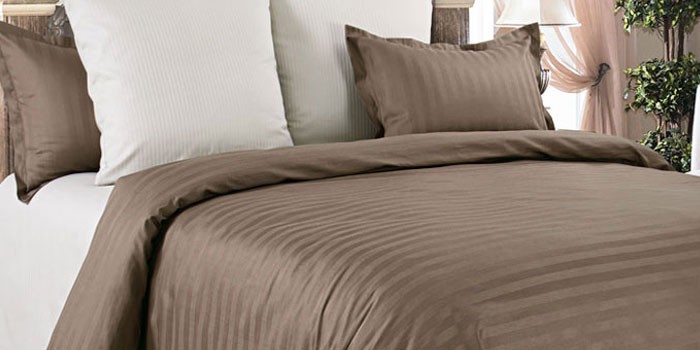
Children's bedding made of satin
In order for a child to go to bed with pleasure in his crib, baby satin bedding should be soft, not irritate, and have a beautiful, attractive pattern of the appropriate theme. More frequent washing should not affect the color quality and durability of the fabric. The density of satin for baby bedding is slightly less, which increases the softness of the material and increases the baby's comfort. Options:
- Manufacturer – Nordtex:
- Model: Cloud – Bears.
- Price per set: 1700-1800 rub.
- Set: pillowcase – 1 pc., duvet cover – 1 pc., sheet – 1 pc.
- Main advantages: attractive children's theme of the design, use of luxury satin without the addition of synthetics, increased durability, good tolerance to a large number of washes, cheap price.
- Cons: the smoothness of the surface slides, which is not always convenient for a child.
- Manufacturer La Scala:
- Model: Cars.
- Price of the set in gift wrapping: 5750-5900 rub.
- Set: pillowcases (2 pcs.), 1 duvet cover, 1 sheet.
- Main advantages: high quality fabric, bright print, size for the length of a teenage bed.
- Cons: high cost.
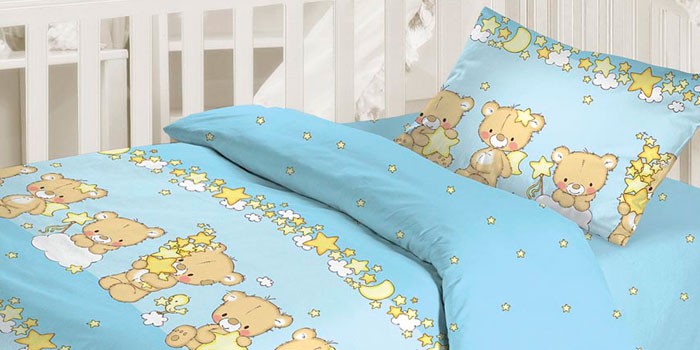
How to choose satin bed linen
Having learned about the wide variety of high-quality fabrics that are used for bedding, it is worth noting once again that the choice of satin bed linen requires a special approach. When purchasing, you need to check the contents of the set, compliance with the brand and manufacturer on the labels and tags. The seams during manufacturing should not be interrupted, without gaps, the threads should all be neatly trimmed. What you need to know when buying specific models:
- Mako-satin. The fabric should be smooth, without roughness or knots, with a matte sheen. Composition: only 100% natural cotton.
- Jacquard. The surface should be smooth, with a uniformly applied relief pattern, without puffs or protruding threads. A lower price will indicate a high synthetic content in the fabric.
- Stripe satin. Mandatory uniform stripes of small width. The fabric is dyed with permanent dyes in solid colors.
- Children's satin. Tactile sensations should be pleasant, the fabric should not be very dense, but durable, without roughness. The drawing needs a children's theme.
Video: satin bed linen – Ivanovo
- Test in adaptation of Leontiev's short story
- Rudolf Steiner: biography and his books
- Methodology for multifactorial personality research R
- Psychedelic Medications and Spiritual Practice Post-Ego Selection Methods
- Yuri Andreevich Andreev three pillars of health
- History of studies at Far Eastern State Transport University (Far Eastern State University of Transport) State educational standards and defense of the thesis
- State budget Presentation on the topic budget
- School Powerpoint Presentations Download presentation on China attractions
- Presentation on the topic of potters
- Territorial marketing: overcoming the crisis, a new model for managing the development of a territory (using the example of
- Presentation on the topic "The effects of nitrates on the human body"
- Why do you dream of a blooming apple tree: interpretation options according to dream books Seeing a blooming apple tree in a dream
- Where does Nikita Mikhalkov live?
- Why do you dream about a ghost?
- Nikita Mikhalkov built an estate for $15 million
- Why do you dream about a witch, dream book, interpretation of dreams online
- Planting something in a dream - what could it mean?
- Why do you dream that a man is cooking, what does the dream symbolize?
- Why do you dream of an abyss according to the dream book?
- Dobrenkov Kravchenko methods of sociological research pdf







